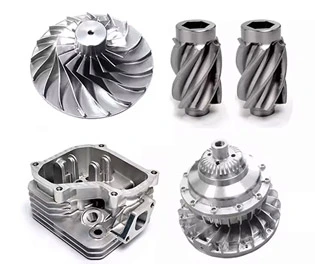Oct 13 , 2023
Delving into the world of stainless steel, understanding its composition and the subsequent heat treatment processes is crucial for unlocking its full potential. This article explores the intricacies of the heat treatment process for stainless steel materials, focusing on martensitic, ferritic, and austenitic classifications. From annealing to quenching and tempering, each process plays a pivotal role in shaping the properties of stainless steel, ensuring its durability and performance in various applications.

Martensitic stainless steel, characterized by its high strength and hardness, undergoes a specific heat treatment process to attain its desired properties. The heat treatment for martensitic stainless steel involves annealing, quenching, and tempering. During annealing, the steel is heated to a specific temperature, followed by controlled cooling to enhance its machinability. Quenching involves rapid cooling to achieve a hardened structure, and tempering imparts toughness and reduces brittleness, striking a delicate balance between strength and resilience.
The Role of CNC Machining in Martensitic Stainless Steel Components
CNC machining, a versatile and precise manufacturing method, plays a pivotal role in shaping components from martensitic stainless steel. The ability of CNC machining to navigate the complexities of heat-treated materials ensures the creation of intricate parts with tight tolerances. From automotive components to industrial tools, CNC machining enhances the precision and efficiency of crafting martensitic stainless steel components tailored to specific applications.
In the realm of martensitic stainless steel, precision is paramount. CNC machining, with its multidimensional capabilities, enables the creation of complex geometries and intricate contours. The adaptability of CNC machining ensures that components maintain the desired hardness and strength, meeting the stringent requirements of industries where martensitic stainless steel's robust properties are essential.
Ferritic stainless steel, exemplified by Cr17 steel, boasts a unique composition with a chromium content of approximately 17%. This composition prevents the a-v transformation during heating, maintaining the ferrite in a single-phase state. In the heat treatment process of ferritic stainless steel, annealing is commonly employed. Annealing involves heating the steel to specific temperatures and controlled cooling to enhance its ductility, corrosion resistance, and overall mechanical properties.
CNC Machining Excellence in Ferritic Stainless Steel Components
The marriage of CNC machining and ferritic stainless steel opens avenues for crafting components with enhanced corrosion resistance and structural integrity. CNC machining's ability to precisely shape ferritic stainless steel components ensures the optimization of mechanical properties. From architectural elements to kitchen appliances, CNC machining plays a pivotal role in delivering high-quality ferritic stainless steel components that meet both aesthetic and functional requirements.
The synergy between heat treatment and CNC machining in ferritic stainless steel lies in the ability to tailor material properties to specific applications. Heat treatment refines the structure, while CNC machining adds the finishing touches. This combination ensures that ferritic stainless steel components not only resist corrosion but also possess the mechanical strength required for diverse applications, showcasing the collaborative power of precision machining and heat treatment.
Austenitic stainless steel, known for its corrosion resistance and versatility, undergoes a range of heat treatment processes to achieve its desired properties. Common treatments include solid solution treatment, stabilization annealing, stress relief, and sensitization treatment. Each process addresses specific characteristics of austenitic stainless steel, ensuring its suitability for applications ranging from medical devices to chemical processing equipment.
CNC Machining Precision in Austenitic Stainless Steel Components
The adaptability of CNC machining shines in the realm of austenitic stainless steel. The precision required in crafting components for critical applications aligns seamlessly with CNC machining capabilities. From intricate medical implants to components for the food and beverage industry, stainless steel CNC machining ensures that austenitic stainless steel components meet the highest standards of quality and performance.